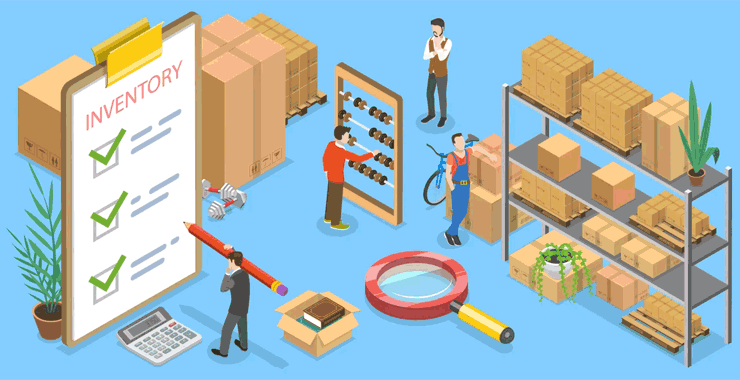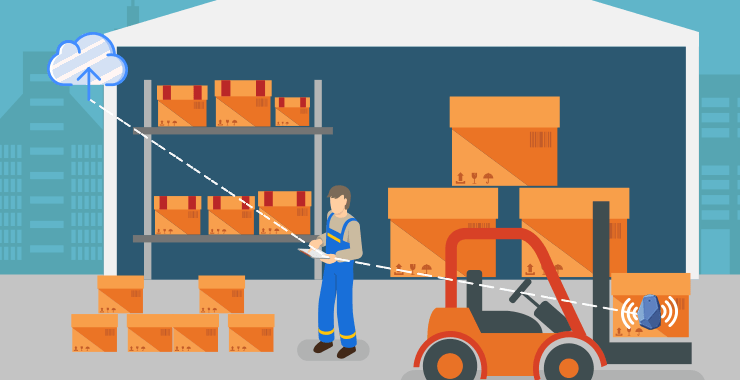Effective inventory management is crucial for companies seeking to optimize operations and boost efficiency. New technologies, from cloud to IoT to data analytics and AI, are revolutionizing how businesses approach stock control. Let's explore the most impactful trends and technologies that will help you manage inventory smarter, increase productivity and ROI.
Technologies You Can Use To Simplify And Automate Inventory Management Process
The methods and tools available for managing inventory evolve as new technologies are developed. See how these technologies can help you with efficient stock control.
Inventory Management Automation Best Practices
Inefficient manual inventory management can be time-consuming, error-prone, and hinder your ability to meet customer demands. That's where automation comes in. In this blog post, we explore the benefits of automation in inventory management, discuss key technologies and strategies, and provide insights on how to implement automation successfully.❱❱ More On Inventory Management Automation
Centralized Inventory Management Platforms: Cloud + Mobile
Streamline your stock control with cloud and mobileCentralized inventory management platforms, powered by cloud software and mobile apps, are transforming the way businesses track and manage their stock. These integrated solutions consolidate real time data from computers, tablets, and smartphones into a single, easily accessible dashboard. Authorized users can access this centralized hub from anywhere, at any time.
Cloud inventory systems foster seamless collaboration among teams, regardless of their location. Whether in the office or the field, all team members can update and access inventory data in real time, leading to better communication and informed decision-making.
A mobile app is a real game change for the field workforce. Equipped with features like QR code and barcode scanning, instant stock level access, real time updates, and digital forms, it empowers field technicians to be productive and efficient.
Say goodbye to lost paperwork! All inventory data, including crucial traceability and lot tracking info, is securely digitized and stored in the cloud, ensuring compliance and facilitating recalls if necessary.
Real time inventory visibility, combined with the comprehensive reporting and demand forecasting, enables businesses to make data-driven decisions that optimize inventory levels and drive profitability. By providing accurate stock data and analysis, these platforms unlock significant cost savings and enhance customer satisfaction.
❱❱ More on Centralized Inventory Platforms

Replacing RFID With Bluetooth Low Energy (BLE) For Warehouse Inventory Management
Inventory management automation with less infrastructureRFID has long been the go-to technology for efficient warehouse inventory management, thanks to its bulk scanning capabilities. However, recent advancements in Bluetooth Low Energy (BLE) technology and the emergence of BLE beacons have positioned BLE as a compelling alternative, and in many ways, a superior replacement.
Why would you choose BLE inventory management system over RFID? Here are some reasons you may want to do it:
- Rapid evolution BLE-based inventory management systems are evolving at a fast pace, offering cutting-edge features and functionality that can outpace more established RFID solutions.
- Smartphone integration Unlike RFID, BLE capabilities are built-in all modern smartphones, tablets and laptops. This eliminates the need to buy costly specialized hardware.
- Versatility BLE tags aren't just for bulk scanning. They can help you find items on the warehouse shelves fast, making picking process faster and more efficient.
- Automation You can use Bluetooth IoT gateways, that can be based on iOS or Android devices, to automatically track inventory flow in and out of the warehouse.
- Leveraging existing hardware Setting up BLE gateways on existing iPads or Android tablets maximizes the use of your current infrastructure and minimizing investment into warehouse management system.
- Beyond inventory BLE gateways can collect warehouse temperature and humidity data, adding another layer of value to your investment.
If you're looking to upgrade your inventory management system, BLE offers a modern, flexible, and cost-effective solution that can significantly boost your efficiency and bottom line.
❱❱ More on RFID vs BLE For Warehouse Inventory Management
Internet Of Things - Remote Inventory Monitoring With Sensors
For many inventory items temperature and humidity monitoring is critical. It is especially relevant to perishable goods, such as food and pharmaceuticals, electronics, wood and paper products, and more. High temperature or excessive humidity can result in waste, spoilage and significant monetary loss.IoT sensors can bring you a peace of mind by automating monitoring temperature and humidity in the warehouse 24/7. You do not need to rely on manual labor, which is ineffective and prone to errors. With the system of IoT sensors and gateways you will be able to remotely monitor temperature and humidity in multiple warehouse locations via a single web dashboard.
Receive instant alerts for environmental fluctuations, enabling rapid response to prevent damage and loss.
Cold Chain Monitoring With IoT - Ensure Products Safety
Cold chain refers to the temperature monitoring for perishable goods through the entire supply chain, ensuring that the products are not compromised and are safe to use. This includes monitoring in various storage facilities, as well as during transportation.Before the widespread adoption of Internet of Things (IoT) technology, cold chain monitoring was labor intensive, ineffective and lacked real time visibility. This resulted in spoilage and waste of products. IoT has transformed cold chain monitoring by enabling real-time tracking of temperature, humidity, and location of perishable goods during transport and storage.
Sensors embedded in packaging or storage facilities continuously collect data, which is then transmitted wirelessly to a cloud platform for analysis. Digital data logs verify that the product is not compromised, or reveal at what part of the supply chain the deviation may happen and for how long. IoT monitoring systems alert interested parties if conditions deviate from the optimal range. It enables timely intervention to prevent spoilage and ensure product quality.
IoT-powered cold chain monitoring improves efficiency, reduces waste, and enhances food safety throughout the entire supply chain.
Streamline Inventory with NFC Tags: The Faster Alternative to QR Codes
While QR codes and RFID/BLE grab the spotlight, NFC technology offers a powerful yet underutilized solution for inventory management. Striking the perfect balance between efficiency and cost, NFC provides a compelling alternative for businesses seeking to streamline their inventory processes.NFC (Near Field Communication) is a wireless technology similar to RFID, but with a much shorter range, requiring devices to be within an inch of each other to communicate. Its compatibility with Android and iPhones makes it ideal for on-the-go inventory tracking.
NFC tags offer a major advantage over QR codes in terms of speed. With a simple tap of your smartphone, you can instantly scan an NFC tag, drastically improving the efficiency of high-volume transactions.
For businesses mindful of their budget, NFC presents a compelling alternative to RFID or BLE. NFC systems offer similar cost-effectiveness to QR code-based solutions, making them an attractive choice for price-conscious businesses seeking to optimize their inventory management process without breaking the bank.
❱❱ More on NFC Inventory Management
Warehouse Management Automation With Sensors And Robotics
In the fast-paced world of modern warehousing, the integration of sensors and robotics is revolutionizing inventory management. By leveraging cutting-edge technologies, businesses are optimizing their operations, improving efficiency, and reducing errors.Sensors enable real-time tracking of inventory levels, location, and condition. Robotics automates picking, packing, and sorting, freeing up human workers for more complex tasks.
This powerful combination allows businesses to manage warehouses more effectively with fewer resources, while increasing data accuracy and minimizing costs.
❱❱ More on Warehouse Automation
Data Analytics And Demand Forecasting
Data analytics and forecasting play a crucial role in optimizing inventory management strategies. By analyzing historical sales data, market trends, and external factors, businesses can gain valuable insights into demand patterns, and predict future inventory needs with greater accuracy. This allows them to make informed decisions about stock levels, replenishment cycles, and materials allocations, reducing the risks of overstocking or stockouts.Forecasting demand also helps optimize pricing strategies, prevent waste, and ensure that the right products are available at the right time.
❱❱ More On Data Analytics And Demand Forecasting
